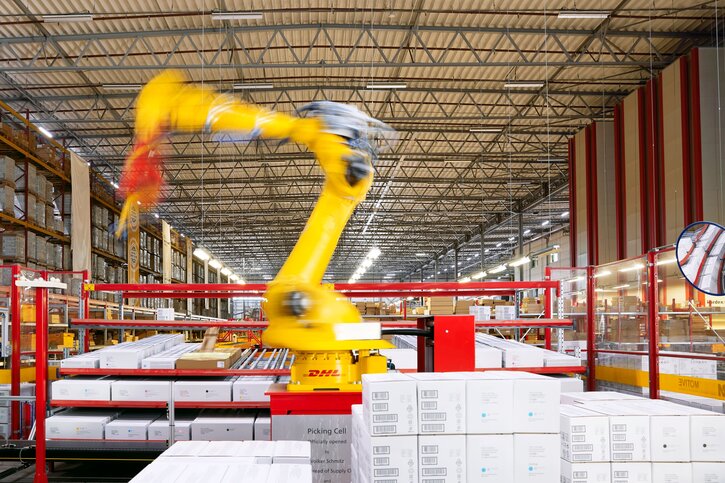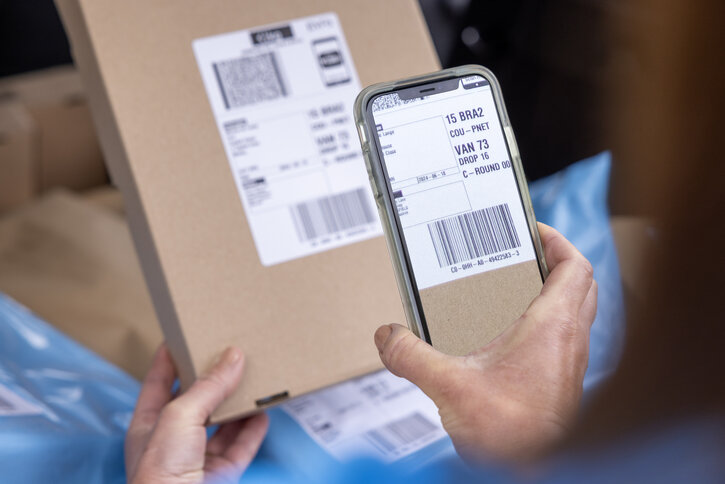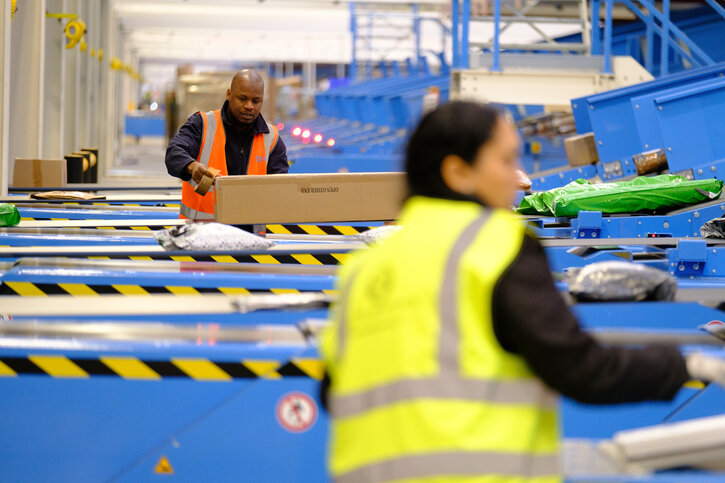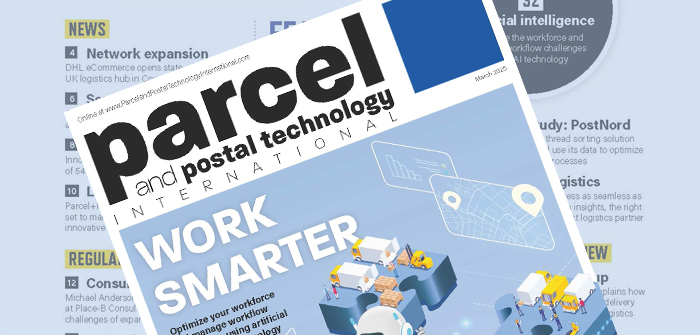The rollout of artificial intelligence (AI) within a company used to incite anxiety among employees, with many workers worrying that it was coming for their jobs. But as more and more firms adopt AI-based solutions, the transformative benefits of the technology and the ways that it can improve operations and assist employees have become clear.
Although some apprehension around being replaced by a robot still exists (and rightly so – a World Economic Forum survey carried out in January 2025 found that 41% of employers intend to downsize their workforce as AI automates certain tasks), many workers are now embracing the technology.
“We don’t see a lot of fear when it comes to AI,” says Ralph Wiechers, EVP of people experience, technology and data at the DHL Group. “It’s more excitement. People now want to work with the technology and explore a more modern way of working.”
Seb Robert, CEO and founder of UK-based same-day courier company Gophr, thinks that concerns over job displacement are one of the key challenges faced by companies rolling out AI, but believes these can be overcome through effective communication with staff. “While AI automates repetitive tasks, logistics firms should focus on redeploying employees into higher-value roles rather than outright replacement,” he says. “Transparency is key. Teams need to understand that AI is there to enhance their work, not replace them.”
AI in the logistics industry
For the logistics sector specifically, AI can play an important role in many ways, including for volume forecasting, capacity planning, predicting staff requirements, route optimization and people development. It can also help optimize operations in an industry that regularly faces skills shortages, especially during the peak season when parcel volumes spike.
According to a recent survey from Descartes Systems, 76% of supply chain and logistics leaders are experiencing notable workforce shortages in their operations, with 37% of respondents characterizing the resource shortage as high to extreme.

For the DHL Group, which has around 600,000 employees in 220 countries and hires approximately 150,000 people a year, AI is a vital tool to help it manage staff shortages, spikes in volumes and capacity planning. “The HR function within DHL is more like a product management organization than a service organization. It’s a machine, and technology such as AI can help manage it in the best way possible,” says Wiechers.
In terms of skills shortages, DHL notes that there has been “a bit of relief” over the past two years due to the economic downturn in most of the markets in which it operates, but there are still “pockets that need addressing”, Wiechers adds. “In Poland, for example, it is tough to find staff for operational roles, mainly due to the impact of the war in Ukraine. And in the UK, we are seeing a shortage of truck drivers.”
Addressing skills shortages such as these and managing staff requirements globally is a big task, but one that artificial intelligence can assist with. “We use AI to bring together data from all areas of the business, not just HR. We use information on operations, customers, volume predictions, employees, etc. AI then brings this data together and analyzes it to make predictions on how many people and what type of people we need where and when.
“We do this on a short-, mid- and long-term basis,” Wiechers continues. “This helps us predict the number of pickers and packers we need in a warehouse at any given time, for example, or how many delivery drivers we need in a specific area. It also enables us to be flexible to handle peaks in volumes. Thanks to AI, we have a good understanding of our hiring needs ahead of time.”
Talent acquisition and development
Another way DHL uses AI to enhance its workforce is through talent development. “At the end of last year, we rolled out our AI-powered Career Marketplace to our 600,000 people,” explains Wiechers. “This is a platform that offers learning opportunities and guidance on what roles are available for career progression within DHL. The aim is to give people a future within our organization and enable them to build their careers to keep them engaged and with the business for longer, therefore reducing our hiring needs.”
The Career Marketplace brings together data on employees, roles within DHL and the skills required in each role to offer workers advice on how they can progress from their current position to other roles with the company. It helps staff identify skills gaps and how they can be filled via learning.
Another logistics firm that uses AI in a similar way is UK-based parcel company Evri, which last year announced a £1m (US$1.2m) investment in its AI strategy to transform its customer service and ensure parcels pass smoothly through its network.
“We have a real drive on developing our people at the moment,” says Chris Gatrell, principal intelligent automation manager at Evri. “One way we are doing this is supporting our learning and development function with different AI tools to help upskill employees. We are also using it for recruitment. We have, for example, recently built a new e-cargo bike recruitment app, using Microsoft Power Apps, which has seen fantastic results in a short space of time.”
This new app recruits and trains people to work with the company’s growing e-cargo bike fleet. Evri currently has around 100 such vehicles but plans to grow the fleet to 3,000 over the next decade, as part of its wider plan to become a net zero company by 2035. “We managed to build this app and move it to live inside eight weeks, demonstrating the speed to market to support our peak recruitment periods and strategic growth in the delivery sector,” Gatrell explains.

According to Gatrell, Evri also has plans to use AI to develop digital assistants and intelligent chatbots to support its workforce and help with staff training. “AI plays a huge part in training and onboarding, ensuring all our new and existing colleagues are getting the latest information in the best way that suits them, such as in their first language or preferred tech method, to support their immediate role and future growth.”
Like DHL, Evri also uses AI to help it forecast what resources it will need at any given time, which is particularly important during peak, when the parcel firm has around 25,000 couriers delivering parcels. Gatrell says, “As we approach peak, volumes dramatically increase from our clients and customers, and therefore we must flex up our workforce and ensure we have the right skills in the right place to successfully deliver.
“AI plays a big role here and gives us greater insight into what resources we require further in advance of the time period, and in turn allows us to recruit the right mix of people in the areas that need it most.”
Same-day delivery challenges
AI can become even more effective when dealing with the complex world of same-day delivery, as Gophr’s Robert explains: “With same-day, there are more moving parts, so any amends or changes to deliveries are more complex than a pre-scheduled overnight. You need almost simultaneous dialog with both the courier and end customer to re-agree on timings, price, etc. Modern versions of AI agents could make this a reality, giving customers way more flexibility over their faster deliveries, which could in turn encourage them to expand their faster shipping options.”
Gophr currently uses AI in several ways to enhance workforce efficiency. The firm is, for example, developing AI-driven customer support that functions such as a human service representative and can understand queries and execute tasks on behalf of customers. “We are also exploring AI for outbound customer engagement, helping to accelerate our sales funnel and improve conversions,” Robert says. “In addition, all our developers use AI-powered coding tools, allowing us to ship products faster and improve overall development efficiency.
“AI can also be used to analyze past peak-season trends and real-time data to make better staffing and routing decisions. Instead of relying on blanket hiring of contract staff, AI can improve efficiency by ensuring that available couriers are deployed more effectively. The key advantage is AI’s ability to make these decisions in real time, reducing the reliance on broad seasonal hiring strategies,” he adds.
According to Robert, AI has a big role to play in tracking delivery staff performance, identifying top performers and developing better ways to keep them engaged and incentivized.
“AI can help with hiring and employee development by analyzing personal performance data and identifying areas where couriers or employees excel, or where they need improvement. It can proactively provide tailored training or coaching to help individuals improve in specific areas. Similarly, AI can assist with recruitment by analyzing candidates’ past performance and predicting how well they may fit into specific roles.”
Advice center
Although AI is undoubtedly gaining traction in the logistics sector, many firms are still getting to grips with the technology. Oliver Shaw, CEO at Orgvue, which provides AI-driven organizational design and workforce planning solutions, encourages companies to embrace AI as soon as possible – rather than “trying to resist the inevitable” – to see how they can work alongside it.

“As tasks are increasingly automated and augmented by AI, it’s likely job roles will need to be redesigned,” Shaw comments. “This is where business and HR leadership will become important, regardless of sector. The best leaders will identify how the work is changing and ensure job descriptions – and, by extension, the entire workforce – change with it.”
DHL’s Wiechers agrees with Shaw, noting that companies should start “quick and small” and try to engage the entire workforce. “AI is no center of excellence topic,” he says. “It can be used throughout the whole organization and in every function. Therefore, it’s important to engage colleagues that might not have had any exposure to the technology, so they can learn with it. It’s also important to have a good understanding of data protection and IT security.”
Gophr’s Robert adds that adopting a mindset of curiosity and agility is also essential for the adoption of AI. “AI presents a narrow window of opportunity,” he says. “Companies that embrace it early will gain a significant competitive advantage. To get started, logistics firms should identify the most repetitive tasks in the business and explore how AI can automate them. This is often the easiest and most impactful entry point.”
How to overcome AI trust issues in the workplace
The use of AI for workforce management brings with it a range of concerns over data protection and job security. However, logistics companies are coming up with inventive new ways to build employee trust in the technology.
Evri, for example, has an AI Forum and in-depth Design Review Committee (DRC) to ensure it has the relevant security and service checks in place to mitigate concerns around data breaches and regulatory compliance.

“From a people perspective, in our automation center of excellence we also have a dedicated business change manager who leads all significant AI/automation implementations,” explains the company’s Chris Gatrell. “This provides a real people focus on all lenses of AI that will change our business.”
DHL, meanwhile, has developed its own generative AI environment, which enables employees to get hands-on experience with AI-powered applications in a secure and trusted environment. This environment is part of the group-wide and cross-divisional Generative AI & Intelligent Automation (GAIA) initiative, which identifies and validates high-impact use cases of generative AI within DHL, such as document management and advanced customer chatbots.
“Within the GAIA hub we encourage people to use AI, explore how it can work in their day-to-day jobs and build trust with it,” says the firm’s Ralph Wiechers. “It helps people to grow with the technology.”
Using AI for volume forecasting – a technology perspective
Prime Vision, which specializes in computer vision systems and robotics for the postal, logistics and e-commerce markets, is currently testing ways that AI can be used for forecasting and capacity planning within the sorting center.
The approach builds on logistics companies’ use of software to simulate different sorting hub scenarios, such as more or less manpower or equipment in different configurations, to help with demand forecasting. “The simulation data can then be used to create AI models that aim to make improvements on their own, or act as input variables for other automated systems, like route and transport planning,” explains Diego Valdivia, product manager at Prime Vision.
The company is currently using this technique of parameterization and simulation combined with volume prediction, allowing postal companies to squeeze out as much throughput as possible with different employee configurations. “Realistic and time-series data helps supervisors visualize how busy certain areas of their sorting centers will be throughout the day, easing planning and daily operations,” Valdivia adds.
This approach makes use of Prime Vision’s Smart Data Manager, a comprehensive solution for importing, editing and distributing the data essential for coding and sorting processes. “Extended by the Smart Analytics solution, we can optimize sorting plans and use of machinery by studying historical data, generating optimized plans and then validating the generated plans against real operational data,” Valdivia explains.
“Combined with external data sources like transport systems, this approach has allowed us to go beyond typical volume forecasting and help planners consolidate delivery products, simplifying the maintenance of routes and increasing the network’s efficiency.”
This article was originally published in the March 2025 issue of Parcel and Postal Technology International



